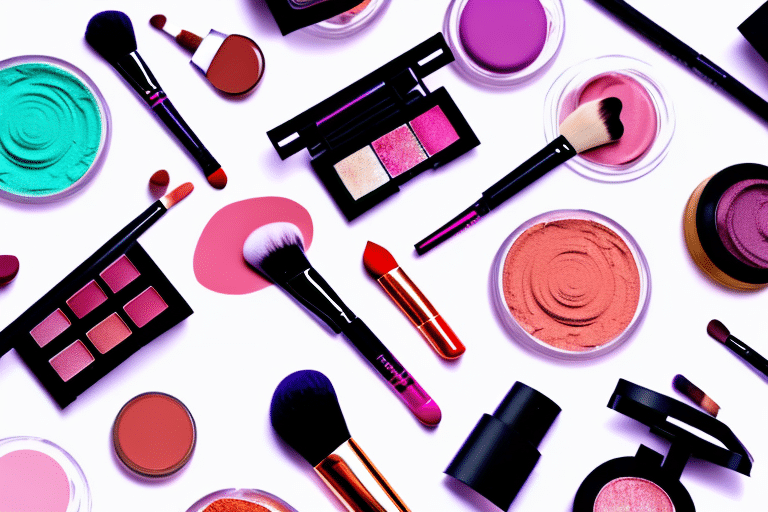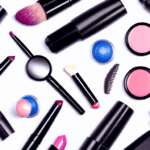Identifying Your Niche and Conducting Market Research
Finding Your Unique Selling Point
Starting your own makeup line begins with identifying a unique niche that sets your products apart in a saturated market. Consider what makes your makeup line different—whether it's vegan and cruelty-free formulations, innovative color-changing lipsticks, or inclusive shades catering to diverse skin tones. Understanding your unique selling point (USP) is crucial for attracting your target audience and establishing brand identity.
Understanding Industry Trends
The global cosmetics market was valued at approximately $545 billion in 2022 and is expected to reach over $805 billion by 2028, growing at a CAGR of 6.5% (Grand View Research). Staying updated with the latest trends, such as clean beauty, personalized cosmetics, and sustainable packaging, can help you align your products with consumer demands.
Conducting Competitor Analysis
Analyze competitors in your chosen niche to identify strengths and weaknesses. Tools like SEMrush and Ahrefs can help you evaluate competitors’ online presence, marketing strategies, and product offerings. Understanding your competition allows you to position your brand effectively and identify gaps in the market.
Creating a Comprehensive Business Plan
Defining Your Vision, Mission, and Goals
A well-crafted business plan outlines your vision for the makeup line, your mission statement, and specific goals. This plan serves as a roadmap, guiding your business decisions and helping you stay focused on your objectives.
Financial Projections and Budgeting
Include detailed financial projections, covering startup costs, operational expenses, and revenue forecasts. Tools like Bplans can assist in creating realistic budgets and financial models. Securing funding through loans, investors, or personal savings will require solid financial planning.
Market Strategy and Growth Plans
Outline your market entry strategy, target audience, pricing models, and growth plans. Consider scalable strategies that allow your business to expand, such as diversifying product lines or entering new markets.
Branding and Product Development
Crafting Your Brand Identity
Your brand identity encompasses your logo, color palette, packaging design, and overall aesthetic. It should reflect your USP and appeal to your target audience. Consistent branding across all channels builds brand recognition and trust.
Formulating High-Quality Products
Develop products that meet industry standards for safety and performance. Collaborate with experienced chemists and adhere to regulations set by bodies like the FDA. Consider obtaining certifications such as vegan, cruelty-free, or organic to enhance product credibility.
Packaging and Sustainability
Choose packaging that not only protects your products but also aligns with sustainability trends. Eco-friendly packaging options can attract environmentally conscious consumers and reduce your brand’s carbon footprint.
Sourcing and Production
Finding Reliable Suppliers
Sourcing high-quality raw materials is essential for product consistency and safety. Research and partner with reputable suppliers who provide reliable materials and meet your quality standards. Platforms like Alibaba or Made-in-China can help you find potential suppliers globally.
Setting Up Manufacturing Processes
Establish efficient manufacturing processes, whether in-house or through third-party manufacturers. Ensure that your production setup adheres to safety and hygiene standards to maintain product integrity and comply with regulations.
Quality Control and Testing
Implement strict quality control measures to ensure that every product meets your standards. Conduct thorough testing, including stability tests and safety assessments, to guarantee product efficacy and consumer safety.
Legal Requirements and Business Registration
Registering Your Business
Register your business name and secure necessary permits and licenses. Depending on your location, this may include federal, state, and local registrations. Resources like the Small Business Administration provide guidance on the registration process.
Understanding Cosmetic Regulations
Ensure compliance with cosmetic regulations, including ingredient disclosures and labeling requirements. Familiarize yourself with the Consumer Product Safety Commission (CPSC) guidelines to avoid legal issues.
Intellectual Property Protection
Protect your brand and products by registering trademarks for your logo and product names. Consider patenting unique formulations or packaging designs to safeguard your innovations.
Marketing Your Makeup Line and Building an Online Presence
Developing a Marketing Strategy
Create a comprehensive marketing strategy that includes digital marketing, content marketing, and traditional advertising. Utilize tools like Mailchimp for email campaigns and Google Ads for paid advertising.
Building a User-Friendly Website
Establish an e-commerce website that is visually appealing and easy to navigate. Platforms like Shopify or WordPress can help you create a professional online store. Ensure your website is optimized for SEO to improve search engine rankings.
Leveraging Social Media
Utilize social media platforms like Instagram, TikTok, and YouTube to showcase your products and engage with your audience. Consistent posting, high-quality visuals, and interactive content can significantly boost your brand’s visibility.
Content Marketing and SEO
Produce valuable content, such as blog posts, tutorials, and reviews, to attract and retain customers. Implement SEO best practices by using relevant keywords, optimizing meta descriptions, and creating backlinks from reputable sources to enhance your website’s search engine performance.
Networking and Influencer Collaborations
Partnering with Influencers
Collaborate with beauty influencers and bloggers who resonate with your brand values. Influencer endorsements can expand your reach and build credibility. Platforms like Influence.co can help you find suitable partners.
Participating in Industry Events
Attend trade shows, beauty expos, and networking events to connect with industry professionals and potential partners. These events provide opportunities to showcase your products, gain insights, and establish valuable relationships.
Building Strategic Partnerships
Form strategic partnerships with other brands or makeup artists to co-create products or cross-promote each other’s offerings. Such collaborations can introduce your brand to new audiences and enhance your market presence.
Managing Operations and Scaling Up
Efficient Inventory Management
Implement robust inventory management systems to track stock levels, manage orders, and forecast demand. Tools like TradeGecko can help streamline your inventory processes.
Optimizing Shipping and Logistics
Choose reliable shipping partners and develop efficient logistics strategies to ensure timely delivery of products. Offering multiple shipping options and transparent tracking can enhance customer satisfaction.
Providing Excellent Customer Service
Deliver outstanding customer service by promptly addressing inquiries, handling returns smoothly, and seeking customer feedback. Positive customer experiences can lead to repeat business and word-of-mouth referrals.
Scaling Your Product Line
As your business grows, consider expanding your product offerings to include new makeup categories or innovative formulations. Continuous product development keeps your brand relevant and meets evolving consumer needs.
Future Trends and Adapting to the Makeup Industry
Embracing Technological Innovations
Stay ahead by integrating the latest technologies, such as augmented reality (AR) for virtual try-ons or personalized beauty apps. These innovations can enhance the customer experience and differentiate your brand.
Adapting to Consumer Preferences
Monitor and respond to shifting consumer preferences, such as the demand for clean beauty products, eco-friendly packaging, and inclusive shades. Flexibility and adaptability are key to sustaining long-term success in the dynamic makeup industry.
Staying Informed on Industry Developments
Regularly follow industry reports from sources like NPD Group and Cosmetics Business to stay informed about market trends and emerging opportunities.
Preparing for Market Shifts
Develop strategies to pivot your business model in response to economic changes, new regulations, or competitive pressures. Proactive planning ensures that your makeup line remains resilient and adaptable.
Conclusion
Launching your own makeup line is a challenging yet rewarding endeavor that requires strategic planning, creativity, and dedication. By following the outlined steps—from identifying your niche and conducting thorough market research to branding, sourcing, and effective marketing—you can build a successful makeup brand. Stay informed about industry trends, continuously innovate, and prioritize customer satisfaction to sustain and grow your business in the competitive cosmetics market.






















